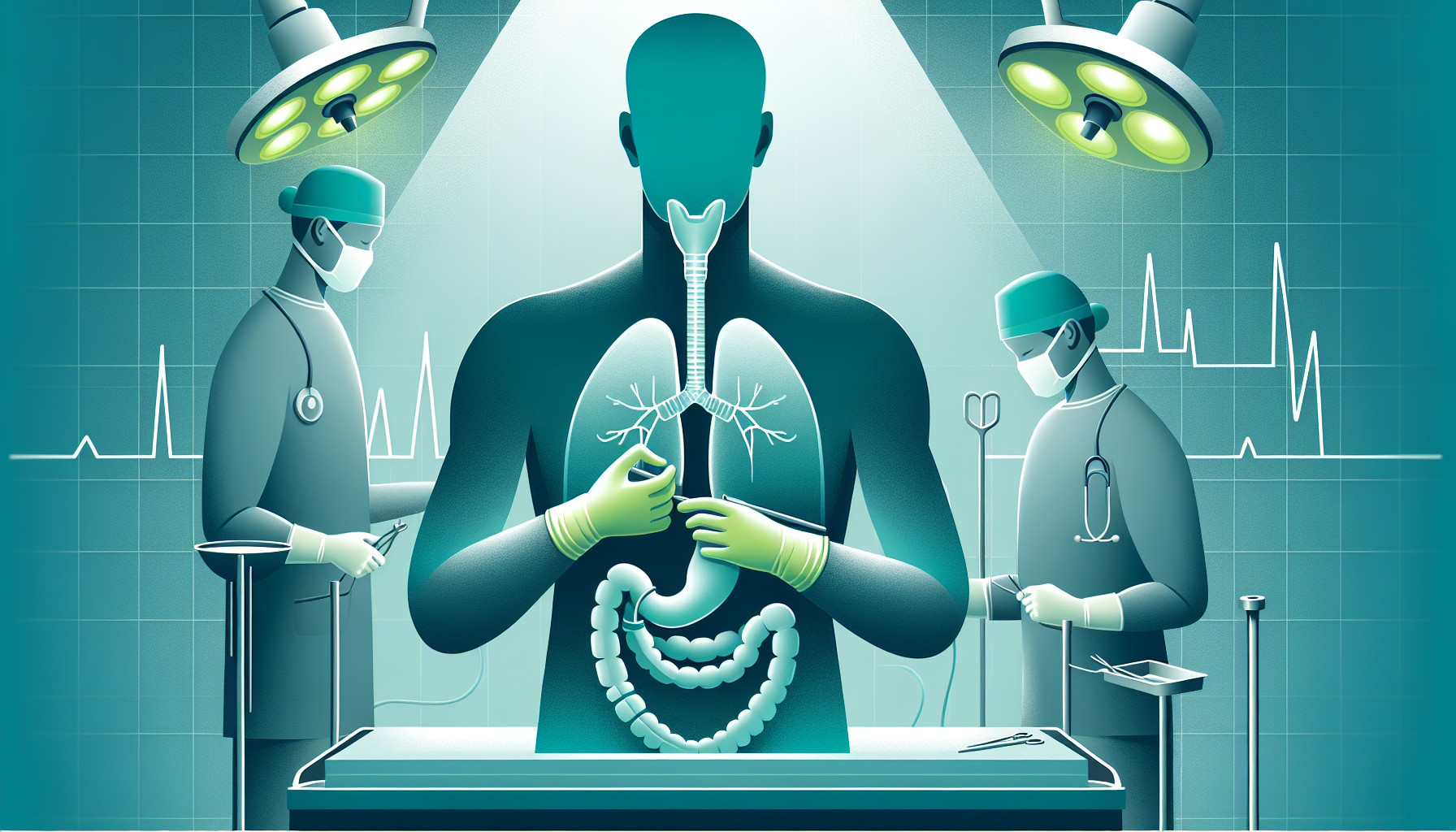Our Summary
This research paper discusses a type of surgery known as esophagectomy, which is commonly performed to treat esophageal diseases. Esophagectomies can be quite complex and have evolved greatly over the past decade, with minimally invasive esophagectomies (MIEs) now being the preferred method.
The paper specifically examines the development of MIEs, why this approach is favored, and the best ways to connect the new esophagus to the remaining part of the original esophagus after the diseased section has been removed. This connection process is called anastomosis and can be done either in the neck or within the chest.
The paper concludes that regardless of the specific MIE technique used, these anastomotic methods can be performed easily and safely using standard laparoscopic instruments. Detailed instructions are provided for each method, emphasizing their reproducibility and safety.
FAQs
- What is a minimally invasive esophagectomy (MIE) and why has it become the gold standard?
- How have esophagectomy procedures evolved over the past decade?
- What are some standard methods for anastomosing the Neo-esophagus to the remnant esophagus after an esophagectomy?
Doctor’s Tip
One helpful tip a doctor might give a patient about esophagectomy is to follow the post-operative care instructions closely, including proper nutrition and avoiding certain foods that may irritate the newly formed connection between the stomach and esophagus. It’s important to stay hydrated, eat small, frequent meals, and avoid heavy lifting or strenuous activities during the recovery period to ensure a successful outcome.
Suitable For
Patients who are typically recommended for esophagectomy include those with esophageal cancer, Barrett’s esophagus with high-grade dysplasia, severe reflux esophagitis, esophageal strictures, and esophageal motility disorders. Patients who have failed medical management or other less invasive treatments may also be candidates for esophagectomy. Additionally, patients who are deemed fit for surgery and are able to tolerate the procedure and post-operative recovery may be recommended for esophagectomy.
Timeline
Before esophagectomy:
- Patient undergoes various tests and evaluations to determine the need for surgery, such as endoscopy, biopsy, CT scans, and blood tests.
- Patient meets with a multidisciplinary team to discuss treatment options and potential risks and benefits of surgery.
- Patient undergoes preoperative preparation, which may include dietary changes, smoking cessation, and physical therapy.
After esophagectomy:
- Patient is closely monitored in the intensive care unit (ICU) immediately following surgery.
- Patient gradually transitions to a liquid diet and may require a feeding tube for nutrition.
- Patient undergoes physical therapy and rehabilitation to regain strength and mobility.
- Patient may experience complications such as infection, leakage at the surgical site, or difficulty swallowing.
- Patient follows up with healthcare providers regularly for monitoring and management of any long-term effects of the surgery.
What to Ask Your Doctor
- What is the success rate of minimally invasive esophagectomy compared to traditional open surgery?
- What are the potential complications and risks associated with esophagectomy?
- How long is the recovery period after undergoing an esophagectomy?
- What dietary changes will I need to make after the surgery?
- Will I need any additional treatments or therapies after the esophagectomy?
- How often will I need follow-up appointments and tests to monitor my recovery?
- Are there any specific lifestyle changes I should make to improve my recovery and overall health?
- What is your experience and expertise in performing esophagectomies, particularly minimally invasive procedures?
- Can you provide me with information on support groups or resources for patients who have undergone esophagectomy?
- Are there any alternative treatment options or approaches to consider before proceeding with esophagectomy?
Reference
Authors: Knickerbocker C, Andreoni A, Nieber D, Nwafor D, Ben-David K. Journal: J Laparoendosc Adv Surg Tech A. 2019 Apr;29(4):513-518. doi: 10.1089/lap.2018.0718. Epub 2019 Mar 5. PMID: 30835151
